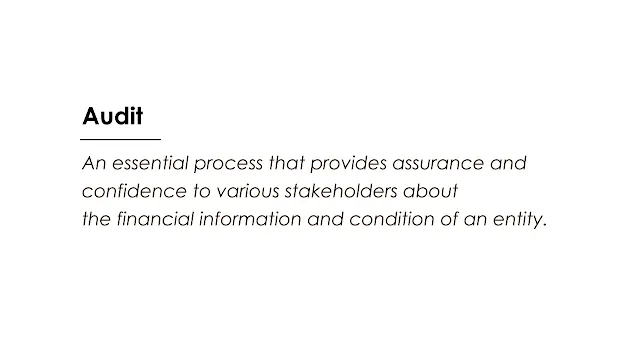 |
| Image: Moneybestpal.com |
Audit is an essential process that provides assurance and confidence to various stakeholders about the financial information and condition of an entity.
An audit is described as "an independent examination of financial information of any entity, whether profit oriented or not, irrespective of its size or legal form when such an examination is conducted with a view to express an opinion thereon."
Since the COVID-19 pandemic, which altered the economic environment and hastened the adoption of digital technologies, the auditing profession has undergone significant change. In order to improve audit quality, efficiency, and value, auditors must be aware of the shifting risks and possibilities in the connected and real-time economy.
D&A may assist auditors in testing entire data populations, spotting outliers and abnormalities, comprehending the underlying business causes, and offering insights and suggestions to enhance performance and compliance. By identifying which companies are more risky and demand more attention, D&A can assist auditors in creating a more risk-based planning approach.
Some of the emerging technologies that are transforming the audit process include:
- Cloud-based data extraction: With the use of this technology, auditors can remotely access and examine data from numerous sources without endangering security or privacy. Additionally, cloud-based data extraction decreases the time and expense associated with data gathering and processing, allowing auditors to concentrate on higher-value tasks.
- Distributed ledger technology (DLT): DLT, commonly referred to as blockchain, is a method of transaction recording that is shared, validated, and updated by a network of participants without the need for a centralized authority. DLT can improve audit quality by giving users access to a trustworthy, transparent, and unchangeable record of all transactions, events, and contracts. By enabling auditors to watch and confirm data as it is generated and recorded, DLT can also provide real-time auditing and continuous assurance.
- Robotic process automation (RPA): RPA is the employment of digital assistants or software robots to carry out routine, rule-based operations that are typically completed by people. By automating processes including data extraction, reconciliation, validation, testing, and reporting, RPA can increase audit efficiency and accuracy. Additionally, RPA can free up auditors' time for more difficult and discerning duties that call for human involvement.
- Drone technology: Drone technology is the use of unmanned aerial vehicles (UAVs) to capture images, videos, or data from remote or inaccessible locations. Drone technology can improve audit quality by giving auditors more trustworthy and thorough evidence, particularly for tangible assets like inventory, property, plant, and equipment. By reducing human error, fraud, and biases in data collecting, drone technology can also lower audit risks.
- Machine learning (ML): A subfield of artificial intelligence (AI) called machine learning (ML) enables computers to gain knowledge from data and enhance their performance without explicit programming. ML can improve audit quality by giving auditors more insightful and pertinent information based on patterns, trends, and anomalies found in massive and complicated data sets. By utilizing sentiment analysis, NLP, and predictive analytics, ML may also assist auditors in identifying risks, opportunities, and places for development.
These technologies are not only reshaping the auditing process but also creating a new auditing experience for both auditors and auditees. The new auditing experience is characterized by:
- Enhanced collaboration: Using cloud-based platforms, video conferencing equipment, and chatbots, auditors can interact and communicate with auditees more effectively and efficiently. Through the use of interactive dashboards, infographics, and reports, auditors may also quickly communicate the auditee's views and suggestions.
- Increased transparency: Auditors can provide more assurance and confidence to auditees and other stakeholders, by disclosing more information about the audit scope, methodology, procedures, and findings. By upholding moral norms and industry best practices, auditors can also show their independence, neutrality, and professionalism.
- Greater value: By offering insights on both current performance and potential futures, in addition to comments on historical data, auditors can add additional value to auditees and other stakeholders. Additionally, auditors can assist auditees in strengthening their governance, risk management, and business processes.
